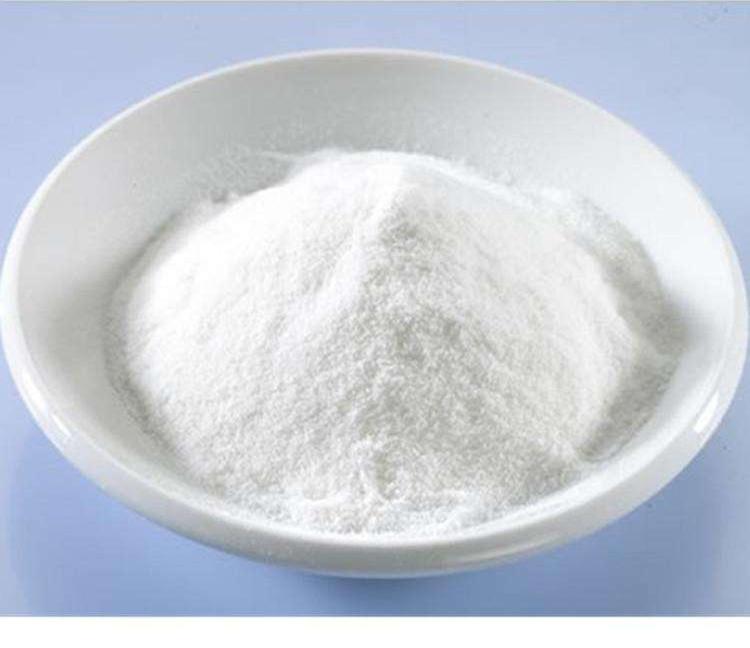Inulin Is What?
Inulin is a fructan composed of D-fructofuranose molecules linked by β-(2-1) glycosidic bonds, and each inulin molecule has a glucose residue linked by an α-(1-2) glycosidic bond at the end of the molecule. The degree of polymerization is usually from 2 to 60, and the average degree of polymerization is 10, of which the lower degree of polymerization (DP = 2-9) is called oligofructose [1, 2]. Inulin belongs to the reserve polysaccharides in plants, and the average molecular weight and degree of polymerization of inulin are affected by different plant sources, harvest seasons, climates, soils, and production and processing processes.
Inulin is widely distributed in nature and is found in some fungi and bacteria, but its main source is plants. More than 36,000 species of plants, including 11 families of dicotyledonous plants, such as Asteraceae, Eustoma and Gentianaceae, as well as monocotyledonous plants, such as Liliaceae and Gramineae, are rich in inulin. The contents of inulin in some common plants are shown in Table 1.
Table 1 Inulin content in some common plants*[6]
Plant Name | Inulin content (%) |
maize | 1 ~ 4 |
onion (Allium cepa) | 2 ~ 6 |
leek | 10 ~ 15 |
asparagus | 10 ~ 15 |
chicory | 13 ~ 20 |
Solomon's ginseng | 15 ~ 20 |
Jerusalem artichoke | 15 ~ 20 |
Dahlia tubers | 15 ~ 20 |
molasses | 15 ~ 25 |
[Note]* Inulin content of water-content plants | |
Currently, inulin is widely used in food, medicine and chemical industries. Inulin can not only be used as a fat substitute in the production of low-energy foods, but also has the physiological functions of dietary fiber and prebiotics, making it an excellent functional food base. According to the data [2], the per capita consumption of inulin in the United States is 1~4g/d, while in Europe it is 3~10g/d. In addition, inulin can be used in the production of low energy foods through enzymatic or enzymatic processes. In addition, after inulin is enzymatically or chemically modified, modified inulin can be effectively used as the main component of drug carriers [3], vaccine adjuvants [4], metal chelating agents [5], and descaling agents [6].
1 . Brief Introduction of Inulin
Inulin extracted from plants is a mixture of oligofructose with different degrees of polymerization and its carbohydrate content is usually in the range of 13 . 2%-27 . 7%, and the chemical structure of inulin is shown in Fig. 1.
Figure 1 Chemical structure of inulin (N = 2 ~ 60) [7]
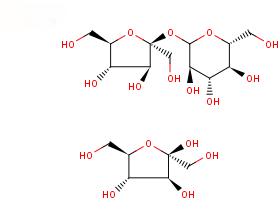
1 . 1 Physical and Chemical Properties of Inulin
Dried inulin is a white amorphous powder with strong hygroscopicity and a specific gravity of 1.5 mm. The specific weight is 1.35. Pure inulin powder is tasteless, but commercial inulin often contains a small amount of monosaccharides and disaccharides and is slightly sweet. Inulin is slightly soluble in cold water, easily soluble in hot water, solubility increases with the increase of temperature [8, 9]. For example, the inulin produced by Belgian orafti company (trade name RaftilinHP), it is almost insoluble in water at 25℃, and the solubility is only 1.2% (W/V) at 50℃, and the solubility is only 1.2% (W/V) at 50℃. 2% (W/V) at 50°C, and when the temperature reaches 90°C, the solubility increases significantly to 35% (W/V). Due to the strong hygroscopicity of inulin, it is easy to agglomerate when dispersed in water. Adding starch or quick dissolving treatment can improve the dispersibility of inulin. When inulin is dissolved in water, it can make the freezing point of water decrease and the boiling point increase. Inulin has synergistic effect with powerful sweeteners. Inulin can mask or remove the aftertaste of powerful sweeteners and improve the taste.
After acid hydrolysis or enzymatic hydrolysis, inulin can produce high fructose syrup or oligofructose syrup containing more than 75% D-fructose, and can also be directly fermented to produce alcohol, gluconic acid, and sorbitol. Acid hydrolysis of inulin as fructose is prone to produce a large number of by-products, the use of microbial inulinase (Inulinase, EC . 3 . 2 . 1 . 2 . 2 . 2 . 3 . 2 . (Inulinase, EC . 3 . 2 . 1 . 7) hydrolysis of inulin is very effective, which has become a new way to develop fructose products [10]. Generally speaking, inulin is not hydrolyzed when the pH is greater than 4, while inulin is slowly hydrolyzed to fructose and glucose when the pH is less than 4 and at the appropriate temperature and time, so inulin is unsuitable for the application of high acidity soft drinks. However, in the gel state, due to the lack of free water, inulin is very stable even under acidic or high-temperature conditions, and it was found that inulin is not suitable for use in high-acid soft drinks when the temperature is lower than 10 ℃, and the PH is between 3.0 and 7.0 ℃. 0-7.5. 5, inulin is not hydrolyzed [11].
1 . 2 Gel Properties of Inulin
Inulin solutions of different concentrations have different viscosities. The viscosity increases with the increase of inulin content in the solution. The inulin solution is subjected to high shear or heating-cooling processes to form a gel structure that mimics fat [12, 13].
Macromolecular hydrophilic colloids such as glues, carrageenans, gelatins, guar gums, and xanthan gums are prone to form junction zones that surround a large number of water molecules, see Figure 2.1. 1, dashed box) with a loose colloidal network structure, and are mainly used as thickeners, emulsifiers, water-holding agents, adhesives, and suspending agents. Unlike these hydrophilic colloids, inulin gels are typical particle gels [12], which cannot be used as thickeners or stabilizers, but have a texture and appearance very similar to that of cream, as shown in Figure 2.2. 2, as shown in Figure 2.2. Moreover, the interaction of inulin with hydrocolloids provides good viscosity and fluidity, which can improve the organization of food products and make it an effective fat substitute for the production of low-energy food products.
Figure 2 . 1 Polymer gel form of hydrocolloid
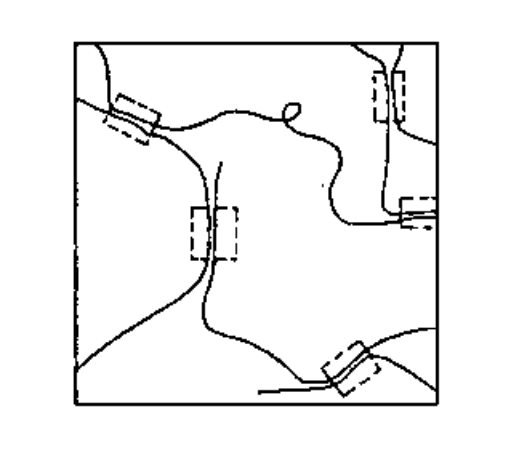
Figure 2 . 2 Particle gel form of inulin.
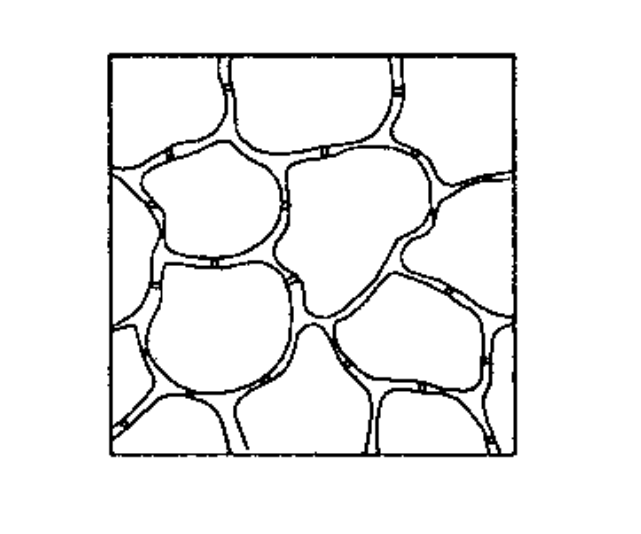
Inulin gels are thermally reversible, liquefying with heat and returning to the gel state after cooling. The formation and characterization of inulin gels are affected by the heating temperature, inulin concentration, pH value of the solution, and the type of organic solvent added (e.g., ethanol or glycerol) [12, 13, 14]. The minimum concentration of inulin required for gel formation increases with the increase of heating temperature, and high temperature (> 80℃) will lead to the hydrolysis of inulin, such as inulin Raftil- inHP concentration of 5% (W). inHP concentration of 5% (W/V), no gel can be formed regardless of the temperature, but at 80℃, when the concentration of inulin is increased to 20% ~ 25% (W/V), the gel formation reaches 100%. Gel formation is also related to the degree of polymerization of inulin and the size of inulin particles, the higher the degree of polymerization, the lower the minimum concentration of gel formation. Compared with the common spray-dried products, the instant inulin products require a lower concentration of inulin in order to achieve the same gel strength.
Therefore, controlling the low hydrolysis degree of inulin and the concentration of inulin play an important role in gel formation. Compared with shearing, the inulin gels formed by heating-cooling were characterized by high strength, smooth texture, and uniform and fine particles. In addition, the inulin gel could be maximized by adding crystalline seeds. When the temperature of the inulin solution was increased to the point where the inulin particles were fully hydrated, and the crystalline seeds were added during the cooling process, the inulin gel formed was compact in texture and had a good taste.
2. Production of Inulin
For industrial production, inulin is mainly extracted from the tubers of Helianthus tuberosus or Chicory [15, 16, 17]. These two plants are rich sources with high inulin content, accounting for more than 70% of the dry weight of their tubers.
The perennial herbaceous plant of Asteraceae family is resistant to barrenness and drought, not demanding to the climate and soil conditions, and has a strong adaptability, which is planted in many areas of China, and generally produces 2,000-4,000 kg per mu of Jerusalem artichoke tubers, which is a good raw material for the processed production of inulin and other products [18].
Chicory is a biennial plant that grows in maritime climates and is a commonly grown vegetable in Western European countries (e.g., the Netherlands). 1993 saw the inclusion of chicory and yucca in the European New Crops Development Program of the European Union (EU), and new varieties of yucca and chicory selected for planting are now being promoted in eight countries of the EU.
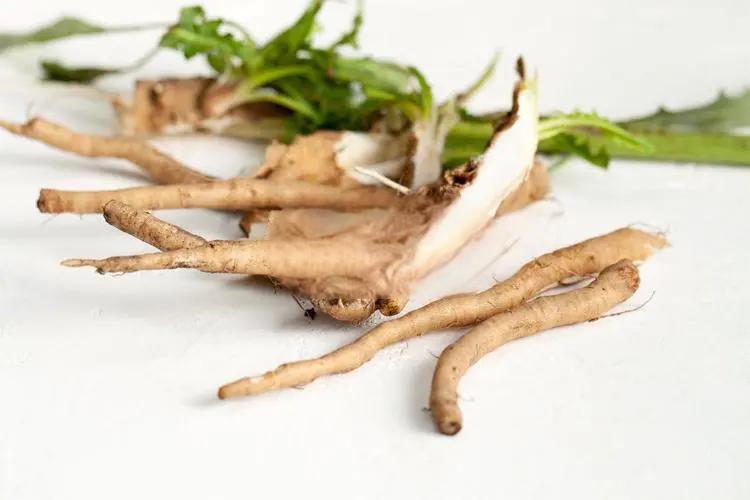
The production process of inulin is relatively simple, similar to the traditional process of extracting beet sugar from sugar beet, in which the process of extracting inulin from inulin includes three basic processes such as extraction, purification and drying, and the process flow is as follows:
Inulin tuber → washing → slicing → boiling water extraction → filtration → lime milk removal → anion exchange resin decolorization → cation exchange resin desalination → vacuum concentration → spray drying → inulin finished product
The crude extract of inulin usually contains protein, pectin, pigment and other impurities, which need to be further purified. With reference to the sugar production process, adding milk of lime to the extract can effectively remove non-inulin impurities, and removing various ionic components in the extract through ion exchange resin, so as to achieve the final purification of inulin extract.Laurenzo, et al. [15] used ultrafiltration membranes to purify the inulin solution, and the effect was obvious, and at the same time using ultrafiltration membranes with different pore sizes, the solution of inulin with different degrees of polymerization could be separated to meet the requirements of different inulin products. At the same time, using different pore sizes of ultrafiltration membrane, different polymerization degree of inulin solution can be separated to meet the requirements of different inulin products.
Using inulinase, control the hydrolysis conditions, inulin can continue to hydrolyze into oligofructose, fructose syrup and even crystalline fructose. Compared with traditional fructose products, the cost is low and the process is simple [19].
3 . Nutrition and Uses of Inulin
The nutritional function of inulin has aroused a great deal of interest all over the world, and in March 2001, the American AACC reported [20] that inulin is a kind of soluble dietary fiber. Inulin is not only not broken down by digestive enzymes in the body and does not produce energy, but also helps to lower blood lipids, regulate gastrointestinal transit time, and promote the absorption of minerals, especially calcium. In addition, inulin is a kind of probiotic, which can stimulate the proliferation of intestinal bifidobacteria, thus promoting the propagation of beneficial intestinal bacteria, which is beneficial to human health.
3 . 1 Dietary Fiber
Through the compositional analysis and physiological function evaluation of inulin, it can be judged that inulin belongs to soluble dietary fiber [20, 21]. First, AOAC 977.08 fructan method was used to analyze inulin. First, inulin was analyzed by the AOAC 977.08 fructan method, and it meets the definition of dietary fiber, i.e., it is resistant to hydrolysis by human digestive enzymes, and it is not digested and absorbed in the small intestine, while it is partially fermented in the colon. Secondly, animal and human toxicological analyses of inulin revealed that it has the physiological functions of dietary fiber, including low energy, improved intestinal function, and regulation of blood glucose and blood lipids.
3 . 1 . 1 Low Energy
Inulin is not digested in the mouth, stomach or small intestine until the colon, where it is fermented in an anaerobic environment by bifidobacteria (bifidobacteria) and lactobacilli (lactobacilli) to produce short-chain fatty acids (SCFAS), lactic acid, and a small amount of gas.The SCFASs are fractionally absorbed in the colon and further metabolized in the liver to produce energy, however this pathway produces very little energy compared to the energy production of easily digestible carbohydrates such as sucrose (17 KJ/g) [22]. However, compared to the energy production of easily digestible carbohydrates such as sucrose (17 KJ/g), the energy production of this fermentation pathway is very low [22].
Robertfloid's study found [1] that one mole of inulin fermented to produce 40% bioflora, 40% SCFAs, 15% lactic acid and 5% CO2 . Approximately 90% of the acid is absorbed in the colon and oxidized in the tissues to produce 14 moles of ATP. However, one mole of free fructose produces 40 moles of ATP, so the energy ratio of inulin to fructose is 14/40. Ran-hotra et. al. performed metabolic homeostasis experiments with inulin in mice, and obtained energy values for chicory inulin of 5 KJ/g (corrected for 10% monosaccharides/disaccharides) and 7.4 KJ/g, respectively. Molis obtained an energy value of 9.5 KJ/g from inulin metabolic homeostasis experiments in humans. Hosoya et al. performed human 14C-labeled oligofructose radioactivity experiments with an energy value of 6 KJ/g.
3 . 1 . 2 Lipid Lowering
Recent studies have shown that inulin (5~10g/d) can significantly reduce blood cholesterol and fat (triglyceride) levels in animals, patients or healthy people, even by more than 20%. Inulin can effectively reduce serum total cholesterol (TC) and low-density lipoprotein cholesterol (LDL-C), but there is a lack of uniform test results on the effects on serum triglyceride (TG) and high-density lipoprotein cholesterol (HDL-C) levels.
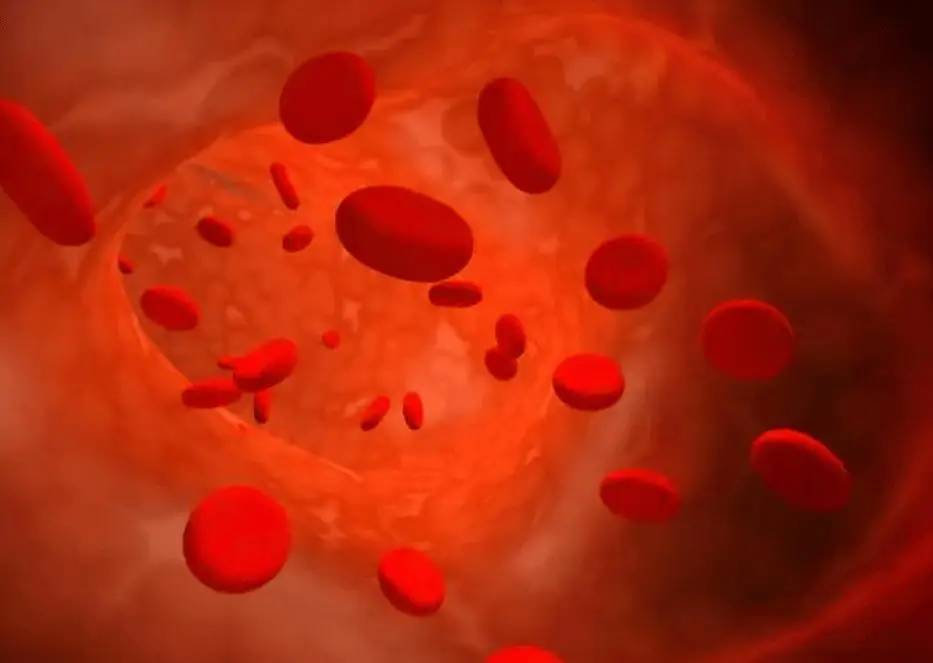
Michael. H Davidson et al. [23] studied 21 patients with high cholesterol (LDL-C between 3.36 and 5.0%). 36 ~ 5.5 mmol) with high cholesterol. In a study of the lipid profile of 21 patients with high cholesterol (LDL-C between 3.36 and 5.17 mmol) who consumed a low-energy food containing inulin, it was found that inulin intake of up to 18 g/d for 6 weeks resulted in a reduction of 1.3% and 2.3% in TC and LDL-C, respectively. After 6 weeks, TC and LDL-C decreased by 1.3% and 2.1%, respectively. After 6 weeks, TC and LDL-C decreased by 1.3% and 2.1%, respectively, with no gastrointestinal discomfort, whereas TC and LDL-C increased significantly by 7.4% and 12.4%, respectively, in the control group who did not consume inulin. 4% and 12.3%, respectively, in control subjects who did not consume inulin. Jennifer L. Causey et al. In a study of 12 men with high cholesterol, Jennifer L. Causey et al. [24] found that after 3 weeks of ingesting 20 g of inulin-containing ice cream per day, there was a nonsignificant trend toward lower TG levels, while the patients' TC (>250 mg/ dl) was significantly lower. et al [25] studied 12 healthy male volunteers aged 22-23 years and showed a 7 . 9% and 21 . 2% reduction in TC and TG, respectively, after intake of cereal containing 18% inulin. 9% and 21 . 2%.
Inulin reduces the risk of cardiovascular disease (CVD) by lowering triglyceride levels in the blood and affecting blood lipid levels. Recent studies [26] have shown that short-chain fatty acids produced by the fermentation of inulin by Bifidobacterium bifidum, particularly the acetate/propionate ratio, which is a cholesterol precursor and propionate, which is an inhibitor of hepatic cholesterol synthesis, affect blood lipid levels.
3 . 1 . 3Regulation of Blood Glucose
Many studies have shown that ingesting a certain amount of inulin can help to slow down and reduce the rate and amount of glucose absorption by the body, thus slowing down and reducing the rise of postprandial blood glucose and serum insulin levels, improving the glucose tolerance curve, and maintaining the balance and stability of postprandial blood glucose levels.
Meehye kim [27] used isotonic electrolytic solution (pH 7.4) containing 10 mmol/l glucose and 10 g/l inulin to perform an enema (30 min) in rats. Meehye kim [27] used an isotonic electrolytic solution (pH 7.4) containing 10 mmol/l glucose and 10 g/l inulin in an enema (30 min) test on rats, and the results showed that inulin in the enema solution significantly inhibited the absorption of glucose from the jejunum (p < 0.05). The results showed that inulin significantly inhibited the absorption of glucose in the jejunum (p < 0.05), and he pointed out that this might be due to the increased viscosity of inulin, which led to an increase in the thickness of the intestinal mucous membrane, thus reducing glucose absorption.
However, Jennifer, L . However, Jennifer, L. Causey et al. [24] found that after oral administration of inulin, insulin and glucagon levels tended to increase 1 hour after glucose intake (p = 0.07), and glucagon levels were particularly elevated. Tappende et al. [28] suggested that one of the important reasons is that SCFA produced by fermentation of inulin will increase the levels of serum glucose transporter (GLUT2), serum glucagon peptide-2 (GLP-2) and glucagon mRNA in the ileum, and that GLP-2 regulates glucose transport, while glucagon mRNA affects glucagon and glucagon mRNA. GLP-2 regulates glucose transport and glucagonogen mRNA affects glucagon expression and secretion.
3 . 2 Probiotics
One of the outstanding features of inulin is its ability to stimulate the proliferation of intestinal bifidobacteria, which functions as a bifidogenic factor. The colon contains more than 400 different species of bacteria, some strains of which are toxin- or carcinogen-producing germs, while others are health-promoting probiotics, mainly bifidobacteria and lactobacilli. However, only a few specific strains of bifidobacteria are able to survive in the gastrointestinal tract and the active environment, which have different biochemical environments, and probiotics are subject to production and storage conditions, where high production temperatures destroy the live bacteria and the products have to be stored in cold environments with very short shelf lives.
Inulin is a prebiotic, which is a non-digestible food ingredient that selectively stimulates and promotes the growth and viability of one or more microorganisms in the colon that are beneficial to the health of the host, improving the health of the host. Inulin is not subject to strict storage conditions and has a long shelf life. Inulin is not digested by human digestive enzymes, but is fermented by certain bacteria in the colon, producing short-chain lipoprotective acid, which lowers the pH value in the colon and promotes the growth and reproduction of intestinal beneficial bacteria, and selectively stimulates and improves the number and vitality of bifidobacteria in the intestine, and inhibits the growth of harmful spoilage bacteria in the intestine. Inulin can be used in combination with probiotics or prebiotics, which has a synergistic effect, and can be added to food to promote the proliferation of probiotics, which is beneficial to human health [29, 30].
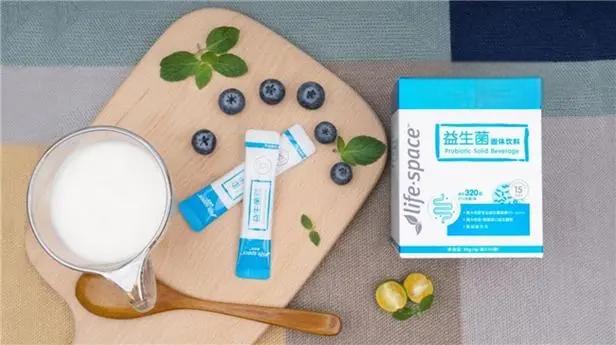
Inulin stimulates the proliferation of intestinal bifidobacteria, improves the activity of bifidobacteria, inhibits the growth of pathogenic bacteria and maintains the balance of intestinal flora. After fermentation in the colon, inulin increases the microflora and the amount of gas, thus promoting intestinal peristalsis, shortening the residence time of feces in the colon, speeding up the movement, reducing the time of water absorption, increasing the weight of feces, and effectively preventing constipation[31]; at the same time, it also increases the amount of fecal excretion, so that the carcinogens in the intestinal tract are also diluted, so that carcinogens on the intestinal biocellular reduction in the stimulation of the intestinal biocellular, also conducive to preventing colon cancer. Therefore, the stimulation of carcinogenic substances to the intestinal cells is reduced, which is also beneficial to the prevention of colon cancer. The short-chain fatty acids produced by the fermentation of inulin in the colon are also very favorable to the prevention of colon cancer, and butyric acid is one of the most important ones.
3 . 3 Promotion of Calcium Absorption
It is well known that dietary fiber can bind metal ions, so increasing fiber intake may decrease the absorption of certain minerals in the intestine. However, inulin, as a soluble dietary fiber, does not inhibit the absorption of minerals, but on the contrary, it promotes the absorption of minerals, such as Ca+2, Mg+2, zn+2, Cu+2, and Fe+2 [2, 22, 30].
In the colon, natural microflora completely ferment inulin to produce lactic acid and short chain fatty acids (SCFAs), all inulin mineral complexes are degraded during fermentation, releasing the minerals and making them more bioavailable for absorption, and the acids produced by the fermentation lower the pH of the colon by 1 to 2 units. Many water-soluble/bioavailable mineral salts, such as calcium phosphate, are better absorbed in this dilute acidic environment. Furthermore, SCFAs, especially butyric acid, promote proliferation of colonic epithelial cells, thereby increasing epithelial absorption. Another mechanism may also be at work, such as an increase in the amount of calcium-binding proteins in specific parts of the colon.
Therefore, ingesting a certain amount of inulin can promote the absorption of minerals, especially calcium phosphate, and promote the absorption and precipitation of calcium in bones, preventing or delaying the occurrence of osteoporosis in menopausal women and the elderly, and SCFAs produced by the fermentation of inulin can promote the absorption of water and electrolytes, which is an important therapeutic effect for patients with acute diarrhea.
4. Application of Inulin in Functional Foods
In recent years, the development and utilization of inulin has been highly valued by the international food industry, and has been successfully applied in the fields of baked food, confectionery, dairy products, beverages and seasonings. Overseas companies such as ORAFTI (Belgium) and SENSUS (Holland) have industrialized the production of inulin and successfully developed a series of inulin-based functional foodstuffs.
The main uses of inulin in functional foods are as follows: to improve the texture and mouthfeel of low-energy ice cream; to stabilize and enhance the volume and mouthfeel of beverages; to replace fat and sugar in baked goods to improve their crunchiness; to improve the water-holding capacity of meat products; and to maintain the quality stability of low-energy spreads. Table 2 shows the recommended dosage of inulin in various food products and the characteristics of the products.
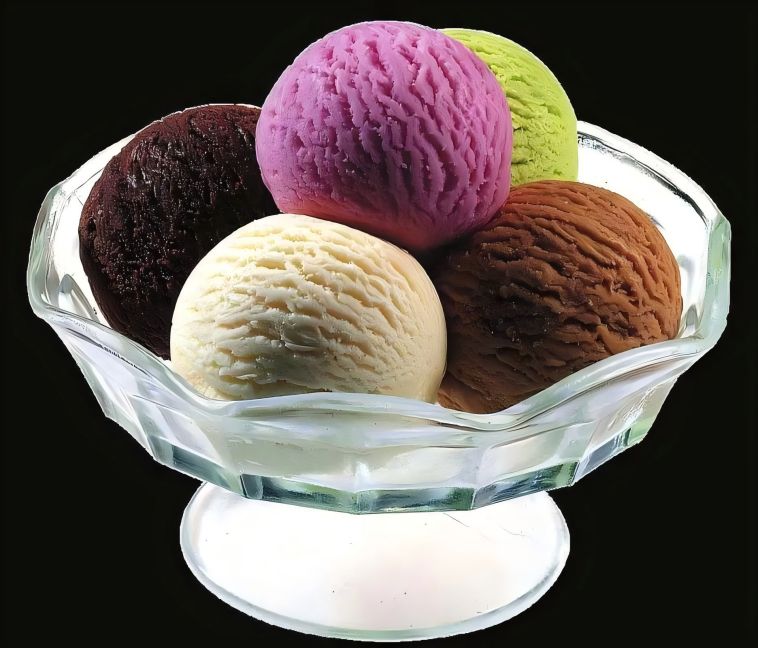
Clinical experiments abroad have proved that daily intake of 40~70g of inulin has no adverse effect on human health. As a natural functional food ingredient, inulin is safe, non-toxic, significantly improves the flavor and quality of food, and promotes the health of the body. China is rich in inulin resources, and the development and application of inulin should be vigorously strengthened.
Table 2 Application of inulin in various foods
foodstuffs | Inulin content in food (%) | Product Characteristics |
bakery | 5 ~ 10 | low energy |
confectionery | 10 ~ 15 | Alternative sugar, low energy |
yogurt | 5 | Improved texture, rich in bifidogenic factors |
spread cheese | 5 | Low energy, low cost |
frozen yogurt | 7 | Improved texture, low energy |
chocolates | 10 ~ 14 | Low energy, fiber-rich filler |
flavoring | 5 | Low energy, improved quality |
meat product | 5 | Rich in fiber, improved quality, low cost |
References:
[1] Roberfloid. concepts in functional foods: the case of inulin and oligofructose. Journal of Nutrition, 1999, 129(75): 1398s ~ 1401s.
[2] kathy R . Niness, Inulin and oligofructose: what are they?American so- ciety for Nutritional sciences, 1999: 1402s ~ 1406s.
[3] Liesbeth vervoort, Guy van den Mooter, et al. Inulin hydrogels. i. Dy- namic and eQuilibrium swelling properties. international Journal of phar- maceutics, 1998, 172: 127 ~ 135 .
[4] Liesbeth vervoort, patrick Rombaut, et al. Inulin hydrogels. II. In vitro degradation study. international Journal of pharmaceutics, 1998, 172: 137 ~ 145 .
[5] verraest, peters, et al. Modification of inulin with amidoxime groups and coordination with copper( II ) ions. carbohydrate polymers, 1998, 37: 209 ~ 214 .
[6] c. E . Wester. chicory for inulin production. agro food industry, 1997, 1/ 2: 5 ~ 7 .
[7] k. NINEss. Breakfast foods and the health benefits of inulin and oligofructose. cereal foods world, 1999, 44(2): 79 ~ 81 .
[8] R . F . silva. use of inulin as a natural texture modifier. cFw, 1996, 40(10): 792 ~ 794 .
[9] Mei Congxiao, Fang Yuanchao. Natural Food Ingredients - Inulin . China Food Additives, 2000, 1 : 25 ~ 28 .
[10] youn Jeung cho, Jayanta sinha, et al. production of inulooligosac- charides from inulin by a dual endoinulinase system. Enzyme and Mi- crobial Technology, 2001, 29: 428 ~ 433 .
[11] sergio de Gennaro, Gordon G . Birch, et al. studies on the physicochem- ical properties of inulin and inulin oligomers. food chemistry, 2000, 68: 179 ~ 183 .
[12] y. kim, M . N . FaQih, s. s. wang. Factors affecting gel formation of inulin. carbohydrate polymers, 2001, 46: 135 ~ 145 .
[13] Tu Yuli . Functions and applications of inulin . Food Industry, 1997, 4 : 45 ~ 46 .
[14] B . H . Azis, B . chin, et al. size and shape of inulin in dimethyl sulphox- ide solution. carbohydrate polymers, 1999, 38: 231 ~ 234 .
[15] Laurenzo, et al. preparation of inulin products. united states patent 5, 968, 365 . 1999, 10, 19 .
[16] chris van waes, Joost Baert, et al. A rapid determination of the total sugar content and the average inulin chain length in roots of chicory. journal of science of Food and Agriculture, 1998, 76(1): 107 ~ 110 .
[17] Bernard Quemener, paul coussement, et al. Integration of inulin deter- mination in the AOAc method for measurement of total dietary bibre. International Journal of Biological Macromolecules, 1997, 21: 175 ~ 178 .
[18] Xiong Shanbai, Zhao Shan et al. Extraction and refining of inulin. Cold Drinks and Frozen Foods Industry, 2001, 7(4): 1 ~ 3 .
[19] Grimm, et al. chicory extract powder products and extract production processes and apparatus. united states patent 5, 958, 497 . 1999, 9, 28 .
[20] The definition of dietary fiber. AAcc Report, cFw, 2001, 46(3):112 126 .
[21] van Loo, J. , coussement, p. , et al. On the presence of inulin and oligofructose as natural ingredients in the western diet. critical Review of Food science and Nutrition, 1995, 35: 525 ~ 552 .
[22] Richard k. Robinson. The potential of inulin as a functional ingredient. British Food Journal, 1995, 97(4): 30 ~ 32 .
[23] Michael H. Davidson, kevin c. Maki, et al. Davidson, kevin c. Maki, et al. Effects of dietary inulin on serum lipids in men and women with hypercholesterolemia. nutrition Research, 1998, 18(3): 503 ~ 517 .
[24] Jennifer L . causey, Joellen M . Feirtag, et al. Effects of dietary inulin on serum lipids, blood glucose and the gastrointestinal environment in hy- percholesterolemic men Nutrition Research, 2000, 20(2):191 ~ 201 .
[25] Brighenti, F . , casiraghi, M . c., et al. Effect of consumption of a ready - to - eat breakfast cereal containing inulin on the intestinal milieu and blood lipids in healthy male volunteers. eur. J. clin. nutr, 1999, 553(9): 726 ~ 733 .
[26] Meehye kim. The water - soluble extract of chicory reduces cholesterol uptake in gut - perfused rats. Nutrition Research, 2000, 20(7): 1017 1026 .
[27] Meehye kim, Hyun kyung shin. The water - soluble extract of chicory reduces glucose uptake from the perfused jejunum in rats. american In- stitute of Nutrition, 1996: 2236 ~ 2242 .
[28] Tappenden, Mcburney. systemic short - chain fatty acids rapidly alter gastrointestinal structure, function, and expression of early response genes. Dig Dis sci, 1998, 43(7):1526 ~ 1536 .
[29] Meehye kim, Hyun kyung shin. The water - soluble extract of chicory influences serum and liver lipid concentrations, cecal short - chain fatty acid concentrations and fecal lipid excretion in rats. concentrations and fecal lipid excretion in rats. American society for Nutritional sciences, 1998: 1731 ~ 1736 .
[30] Jurl Johannes Rumessen, Susan Bode, et al. Fructans of Jerusalem arti- chokes: intestinal transport, absorption, fermentation, and influence on blood glucose, insulin, and c - peptide responses in healthy subjects. american society for clinical Nutrition, 1990, 52: 675 ~ 681 .
[31] Elly Den Hond, Benny Geypens, yvo Ghoos. effect of high performance chicory inulin on constipation. nutrition research, 2000, 20(5):731736 .
-
Prev
Green Spring Technology Provides Comprehensive Synthetic and Natural Vanillin Powder Solutions
-
Next
Study on Jerusalem Artichoke Inulin Powder


 English
English French
French Spanish
Spanish Russian
Russian Korean
Korean Japanese
Japanese